Food for Thought: Papaya
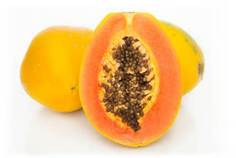
Referred to as the “fruit of the angels”, papaya is a tropical fruit that grows locally in warm, tropical climates such as Hawaii, Florida, Southern Mexico, Central America. They can be found in markets throughout the states mostly during the late summer, fall, and winter months. The two most popular varieties of papaya include Mexican and Hawaiian.
Papaya has a sweet and rich orange/pink flesh with edible black round seeds. The outer skin will vary in color from green to yellow, depending on the ripeness of the fruit. Papaya flesh contains ample amounts of papain, a digestive enzyme that aids in the breakdown of protein, complex carbohydrate (starch), and fats.
Nutritionally, papaya is low in calories and fat, but dense in a wide array of vitamins and minerals, as well as soluble fiber and antioxidants. The most abundant micronutrients contained within the papaya fruit are vitamin C, vitamin A (beta carotene), folate, potassium, magnesium, vitamin E, and vitamin K. Regular papaya consumption can promote cardiovascular health, colon protection, digestive health, bone health, eye support, anti-inflammatory benefits, and immune support. Studies have all indicated that the dense antioxidant content of papaya can prevent free radical damage, especially in the instance of high cholesterol, inflammation, macular degeneration, rheumatoid arthritis, and colon cancer.
Papaya has the highest nutritional value and antioxidant content when fully ripened. To chose a ripe papaya, look for reddish-orange skin that is slightly soft to the touch. Avoid fruit that is bruised or overly soft; black spots are OK. Yellow skinned papayas should be left to ripen at room temperature for a few days. Ripe papayas should be eaten ASAP or refrigerated to slow enzyme activity.
Papaya is a great fruit to eat by itself for breakfast, lunch, or as a snack. It can be prepared just like a melon; cut papaya in half length wise, scoop out the seeds, and enjoy with a spoon. It also makes a great addition to smoothies, salads, seafood entrees, and salsa.
Papaya has a sweet and rich orange/pink flesh with edible black round seeds. The outer skin will vary in color from green to yellow, depending on the ripeness of the fruit. Papaya flesh contains ample amounts of papain, a digestive enzyme that aids in the breakdown of protein, complex carbohydrate (starch), and fats.
Nutritionally, papaya is low in calories and fat, but dense in a wide array of vitamins and minerals, as well as soluble fiber and antioxidants. The most abundant micronutrients contained within the papaya fruit are vitamin C, vitamin A (beta carotene), folate, potassium, magnesium, vitamin E, and vitamin K. Regular papaya consumption can promote cardiovascular health, colon protection, digestive health, bone health, eye support, anti-inflammatory benefits, and immune support. Studies have all indicated that the dense antioxidant content of papaya can prevent free radical damage, especially in the instance of high cholesterol, inflammation, macular degeneration, rheumatoid arthritis, and colon cancer.
Papaya has the highest nutritional value and antioxidant content when fully ripened. To chose a ripe papaya, look for reddish-orange skin that is slightly soft to the touch. Avoid fruit that is bruised or overly soft; black spots are OK. Yellow skinned papayas should be left to ripen at room temperature for a few days. Ripe papayas should be eaten ASAP or refrigerated to slow enzyme activity.
Papaya is a great fruit to eat by itself for breakfast, lunch, or as a snack. It can be prepared just like a melon; cut papaya in half length wise, scoop out the seeds, and enjoy with a spoon. It also makes a great addition to smoothies, salads, seafood entrees, and salsa.
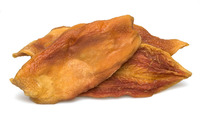
I personally enjoy dehydrated papaya, which can be purchased from Nuts Online or at select health food stores (go for the natural, unsulfured, no sugar added variety).
What is your favorite way to eat papaya?!?!
Victoria
Disclaimer: Individuals with a latex allergy should avoid the consumption of papaya, as well as other latex fruits (avocado, banana). Check with a doctor if you feel you might have a latex allergy before consuming papaya.
What is your favorite way to eat papaya?!?!
Victoria
Disclaimer: Individuals with a latex allergy should avoid the consumption of papaya, as well as other latex fruits (avocado, banana). Check with a doctor if you feel you might have a latex allergy before consuming papaya.
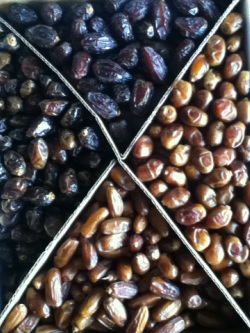
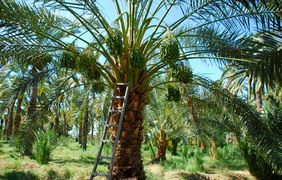
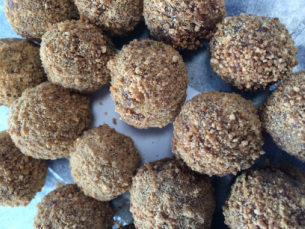
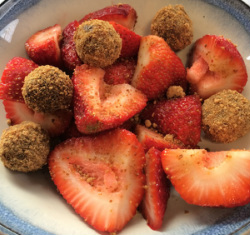
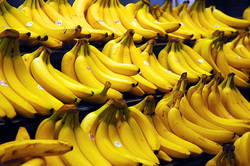

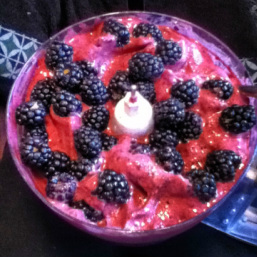
 RSS Feed
RSS Feed
